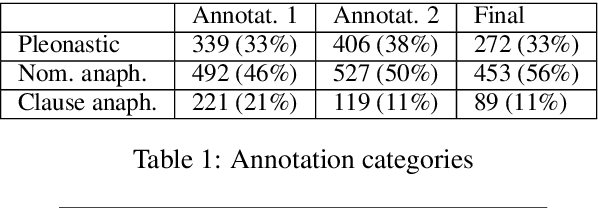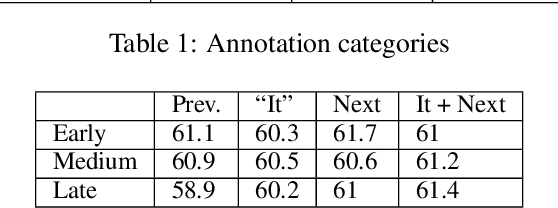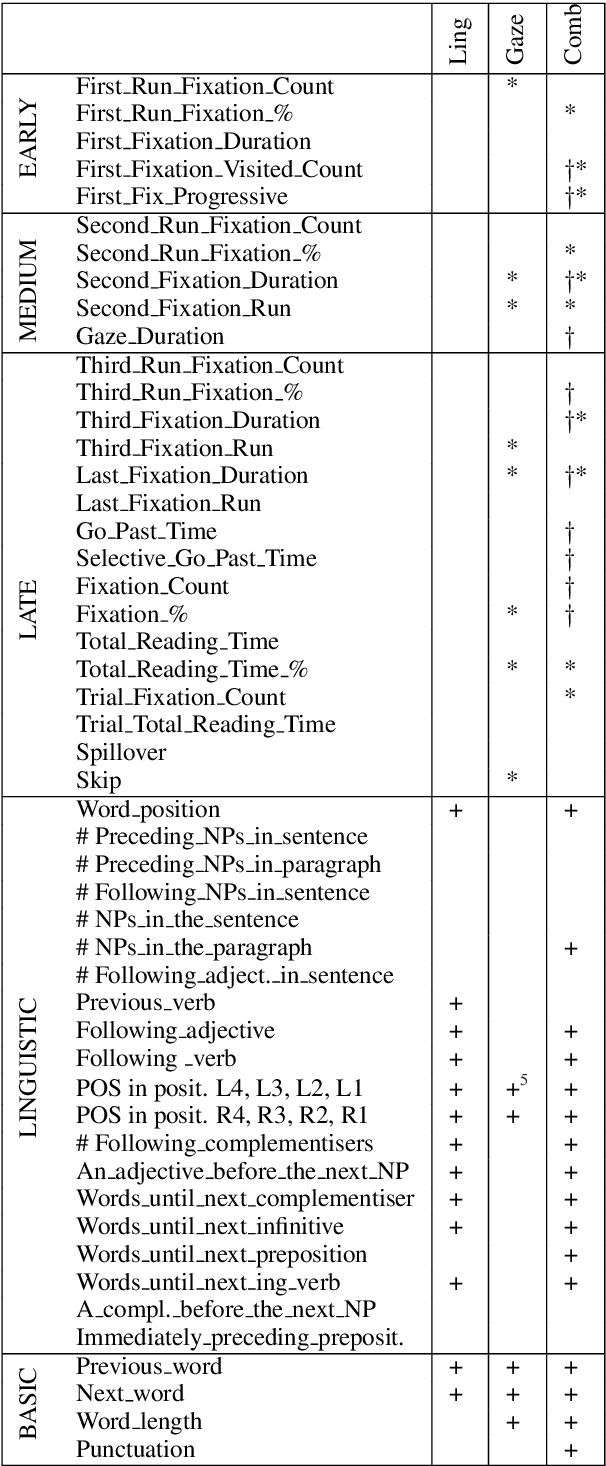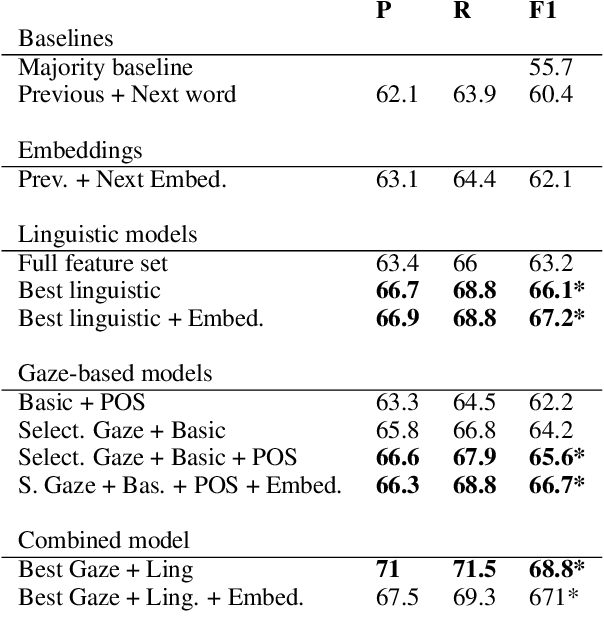Le An Ha
Classifying Referential and Non-referential It Using Gaze
Jun 23, 2020



Abstract:When processing a text, humans and machines must disambiguate between different uses of the pronoun it, including non-referential, nominal anaphoric or clause anaphoric ones. In this paper, we use eye-tracking data to learn how humans perform this disambiguation. We use this knowledge to improve the automatic classification of it. We show that by using gaze data and a POS-tagger we are able to significantly outperform a common baseline and classify between three categories of it with an accuracy comparable to that of linguisticbased approaches. In addition, the discriminatory power of specific gaze features informs the way humans process the pronoun, which, to the best of our knowledge, has not been explored using data from a natural reading task.
Bridging the Gap: Attending to Discontinuity in Identification of Multiword Expressions
Feb 27, 2019



Abstract:We introduce a new method to tag Multiword Expressions (MWEs) using a linguistically interpretable language-independent deep learning architecture. We specifically target discontinuity, an under-explored aspect that poses a significant challenge to computational treatment of MWEs. Two neural architectures are explored: Graph Convolutional Network (GCN) and multi-head self-attention. GCN leverages dependency parse information, and self-attention attends to long-range relations. We finally propose a combined model that integrates complementary information from both through a gating mechanism. The experiments on a standard multilingual dataset for verbal MWEs show that our model outperforms the baselines not only in the case of discontinuous MWEs but also in overall F-score.
 Add to Chrome
Add to Chrome Add to Firefox
Add to Firefox Add to Edge
Add to Edge